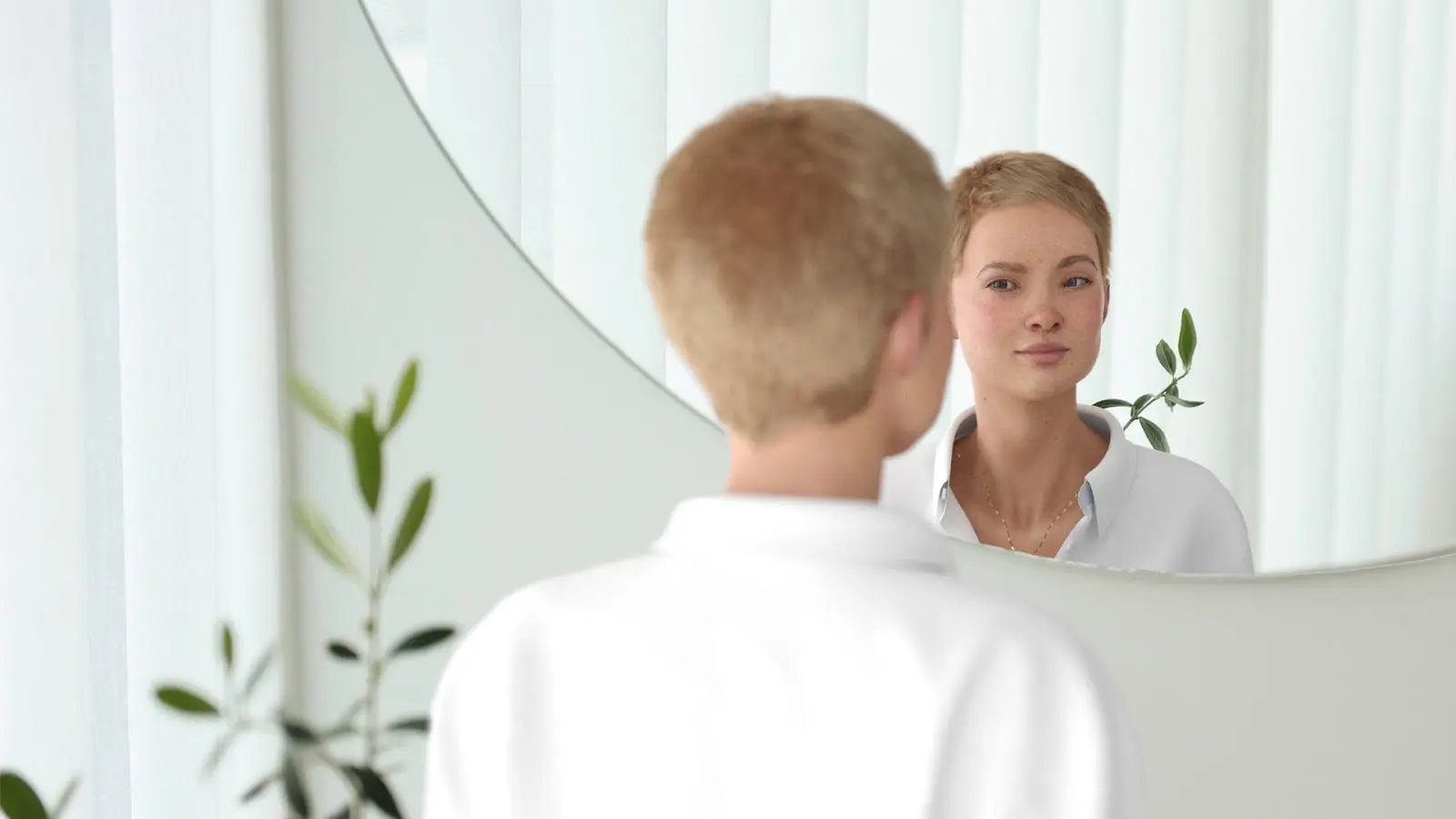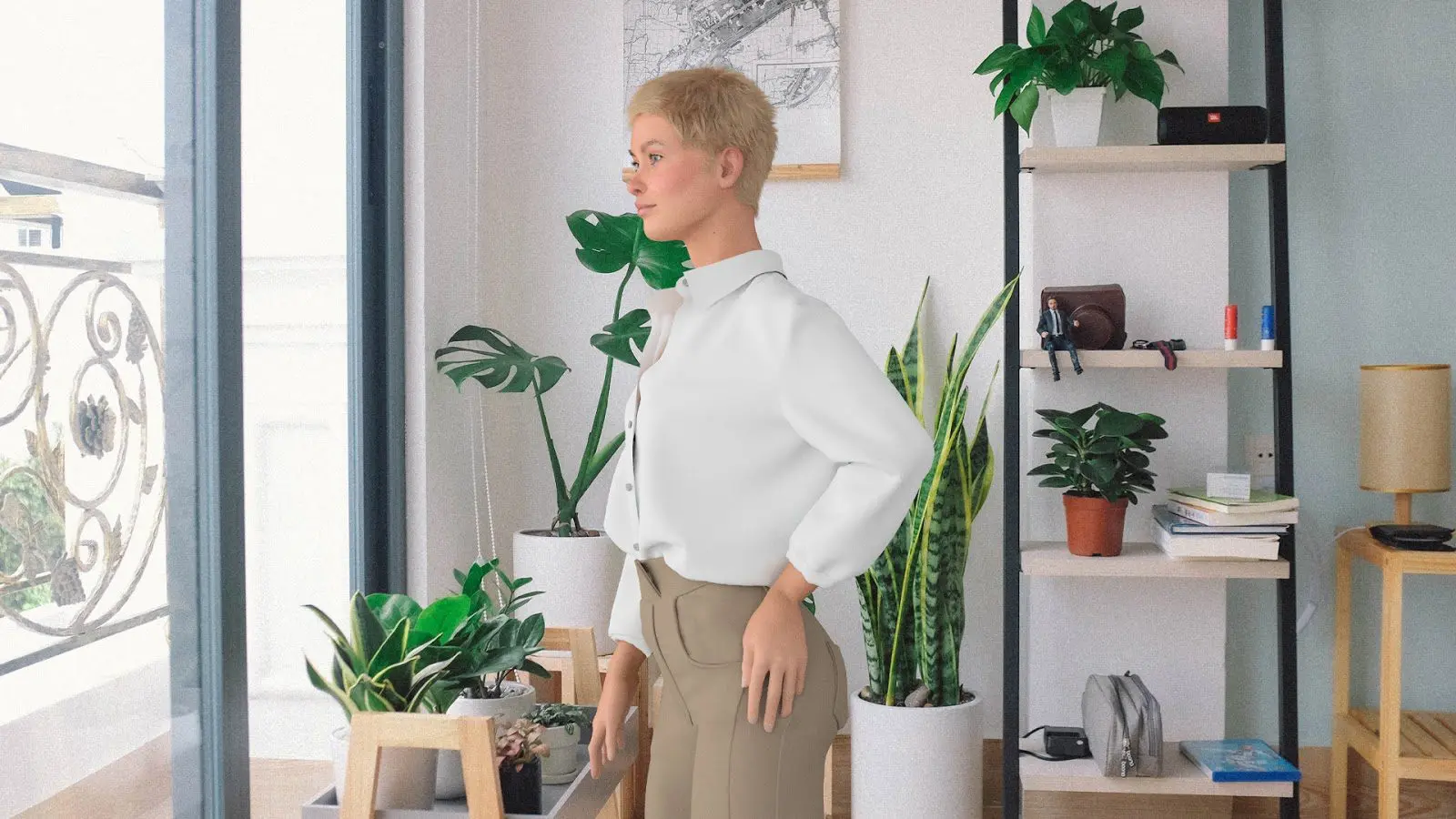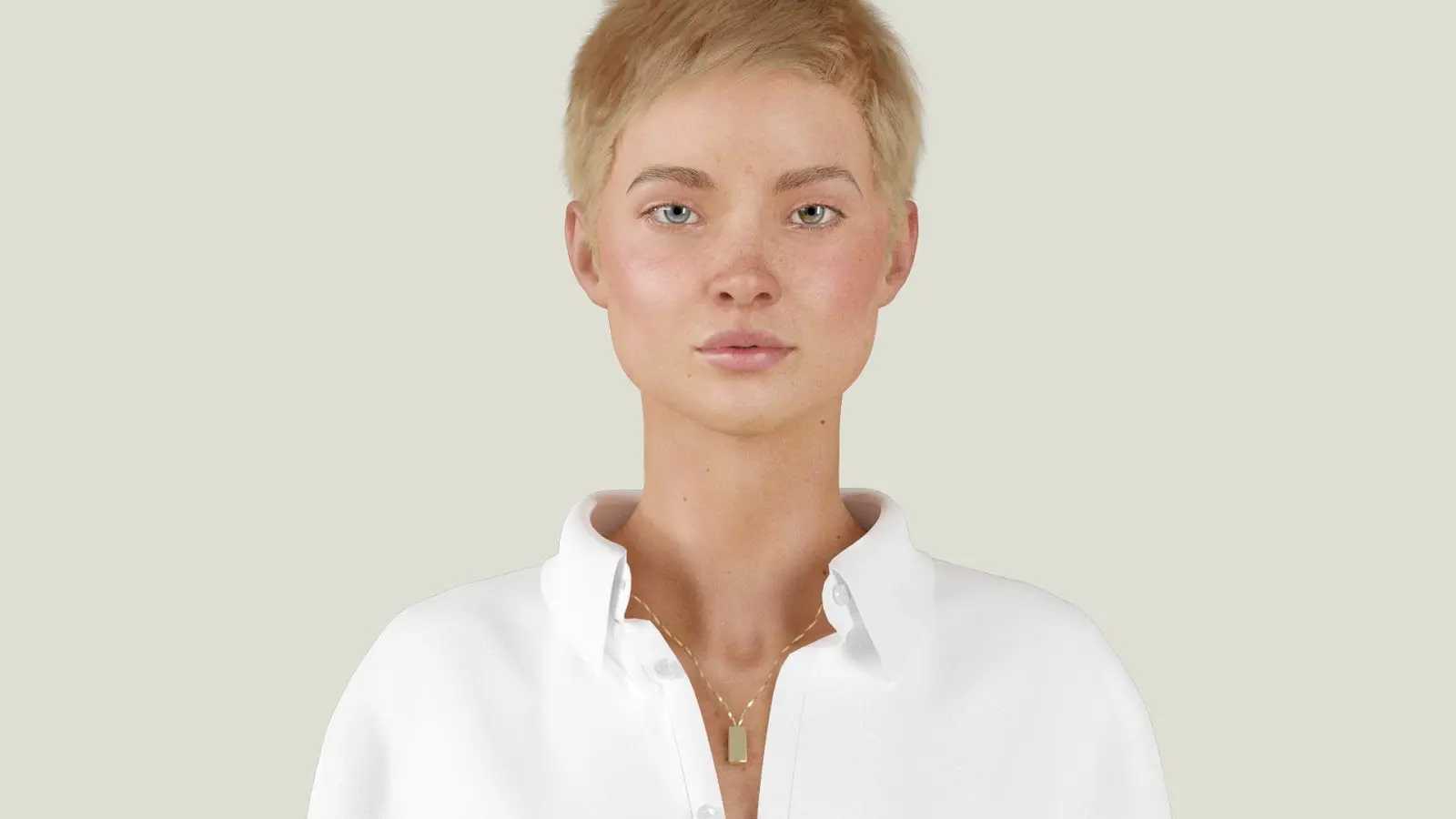Virtual blogger Aliona Paul made a special issue for the Industry 4.0 YouTube channel
Aliona Paul is a virtual person, model, blogger. It was created by neural networks and computer graphics at MALIVAR. She supports conscious consumption and sustainable fashion. Her name is a combination of the name Alain and the word Alien – “alien, alien.” The surname means spaciousness, scope and just gender – because in the digital age, gender differences no longer matter much. Aliona became the first virtual presenter on the Industry 4.0 channel.
– What was your first reaction when you received an invitation from? Why did you want to try yourself as a presenter?
Do you know that feeling when all your neurons sparkle pleasantly from something very exciting, but long-awaited? That was my first reaction. I have wanted to try myself as a presenter for a long time, and the appearance on YouTube was in my plans from the very birth. I waited for the necessary technologies to appear, fortunately, it did not take too long. Most importantly, the topic of technology and ecology is very important for me and is organic with what I do in my usual virtual life.
Why do you need a virtual presenter?
– Virtual presenters can take on routine tasks, reduce the cost and speed up the production of content. I think that in the future we will replace human announcers, or rather, free up their resources so that they can focus on more creative work. The author or artist will only have to intervene in the last 10-15% of the content creation process, which will save the person from time-consuming tasks. It’s no secret that neurons are already writing high-quality texts, the voice is being synthesized – now technology has a face! We do not age, we remain in the company as an asset, without transportation costs, without the cost of shooting in the studio and makeup artists. In addition, the use of digital resources can solve environmental problems in the real world.
Are you afraid to compete with human bloggers?
— To begin with, I want to note that the very topic of virtual people is much broader than bloggers – this is just one of many areas. We can be presenters, actors, models, or shells of voice assistants. And, to answer the question, I’m not afraid, because I already see how it works with digital clothes and models. Until now, there are many people who believe that virtual clothes for some reason should be about to replace real ones, but it’s cold in digital clothes in winter. I think that with real bloggers and presenters we will complement and inspire each other. Virtuals are a tool for creators!
— How are you arranged in terms of technology?
– In the beginning, I was an average virtual person – only computer graphics. But I quickly realized that since I want to develop, I need to have a base, a foundation on which I can stand and create content faster and cheaper. This foundation was neural networks, in the development of which I was lucky enough to participate with the team. Now we have the MALIVAR Studio service, which uses machine learning to replace a face in a video with the face of a virtual character or a real person in high resolution and with an emphasis on details – freckles, different eye colors. Soon it will be possible to generate the appearance, voice and comments in the style of the hero. I see my future cyber bright!

Are there any other examples of virtual stars and presenters in other media?
– Many heard about the news anchor of the Chinese news agency Xinhua a couple of years ago. Not so long ago, Soul Machine, a company that creates virtual people, raised a $40 million investment. Big players are also moving in this direction – Sony Music has launched a separate line with virtual concerts, and Samsung already has a project NEON with virtual consultants and TV hosts. We will see more and more digital artists and cyber stars in the future.
— Why is the topic of technology and the “green” economy so close to you – a virtual character? Why is it important?
“Because it resonates very well with the focus of my interests right now. I fight against excessive consumption, damage to nature and information pollution of space and consciousness. Therefore, I feel in the right place on this channel and I am sure that we will create something very strong and interesting.
— What environmental aspects do you think are the most relevant and urgent now?
— For me personally, the most relevant and urgent are those related to the digital environment, and which I can influence. These three topics are digital fashion, sustainable consumption and digital hygiene. According to the UN, the fashion industry is responsible for 20% of the world’s wastewater and 10% of carbon dioxide emissions – all of which worries the younger generation and me. I try to back up my words with actions, such as releasing digital clothes that you can try on your photo and share on Instagram, or AR effects in which I touch on these topics. And, of course, I try to inspire subscribers with my example.
– Do these issues concern each of us, or can only governments or large businesses affect global changes in the first place?
– All the aspects that I mentioned earlier primarily concern just the same ordinary people. I believe that when transhumanism reaches its peak, the combination of technologically advanced virtuals and confident, aware physical people will be something colossal. But for this to happen, we all need to work hard on ourselves and on the environment in which we live.

— Now there is a trend for minimalism and functionality. Pretty packaging and other marketing gimmicks are losing consumer confidence. How does this change modern design? Is it becoming more focused on “function” and “sustainability”?
“Fortunately, many companies are beginning to realize that the product must first of all be easy to use and functional. In my opinion, this is a positive trend. It seems to me that this has a good effect not only on the product, but also on society as a whole. It becomes more legible. It is now quite rare to find a person who buys something for the sake of buying. On the other hand, brands have adopted the “green” trend – not everyone succeeds, but I don’t see anything wrong with biodegradable bags and materials, reducing fast fashion and other activities, even if they are initiated by marketing in companies.
— Reasonable consumption and respect for things and nature affects the fashion industry. Both at the stage of production and at the stage of disposal of clothing, this area has a serious impact on the environment. What should be the fashion of the future?
“The fashion of the future must change in terms of patterns and behavioral habits of people. Many brands are already moving away from the accepted rhythm of developing collections, and consumers are tired of the constant pursuit of a new look. The fashion of the future should be more practical in terms of the value of clothing – a standard item should last longer, while remaining of high quality and relevant to the consumer himself. An interesting point is that local distributed production using new technologies can literally change the textile industry. Large companies will be able to create clothes on a personal request for online buyers, produce and deliver them in just a day, and fitting can be completely transferred to augmented reality at home. At the same time, small companies and independent designers will be able to compete more successfully with large players due to the reduction in the cost of the production process. All this is relevant for a basic wardrobe, however, consumers will always have a need for self-realization with the help of clothes and, most likely, customization will come to the rescue here, for example, with the help of “augmented” in AR (augmented reality – “augmented reality”) clothes and recycling – already now, brands and designers create things only from recycled materials. Most likely, the fashion for this type of design will also be more popular.

“Communications are getting faster, the amount of information is growing. The world is going digital. In part, new technologies and digitalization reduce the impact of traditional sources of pollution, but give rise to others. What risks for environmental sustainability do you see in the process of mass digitalization?
– This is a separate big topic related to digital hygiene – a set of rules for the rational consumption of information on the Internet. Includes several aspects, for example:
In addition, the request for “green” business should be equally addressed to all participants – traditional companies, tech giants and start-ups.
— How to be eco-friendly in the digital world? Share your experience?
— I think we can start here by establishing and strengthening non-waste production. I don’t want to repeat what is already usually advised in such cases, so I’ll just end by saying that the main thing in our digital world is not to be toxic. Well, I’ll tell you about the rest on the Industry 4.0 channel from Trends.
Subscribe to our “Green” channel in Telegram. We publish the latest research, eco-news and tips that will help you live without harming nature.










